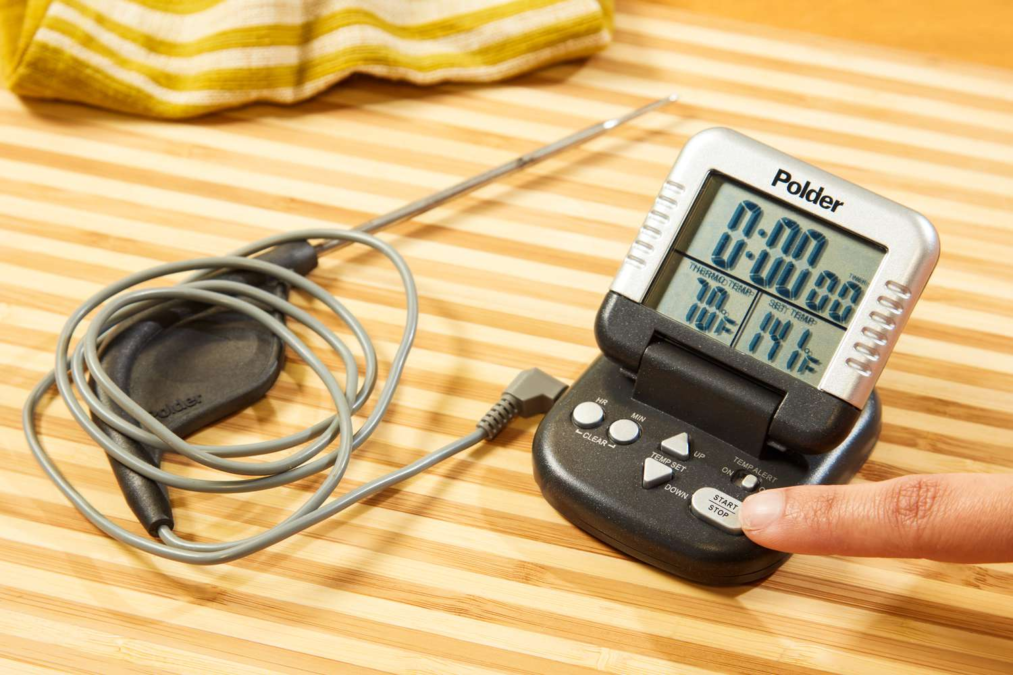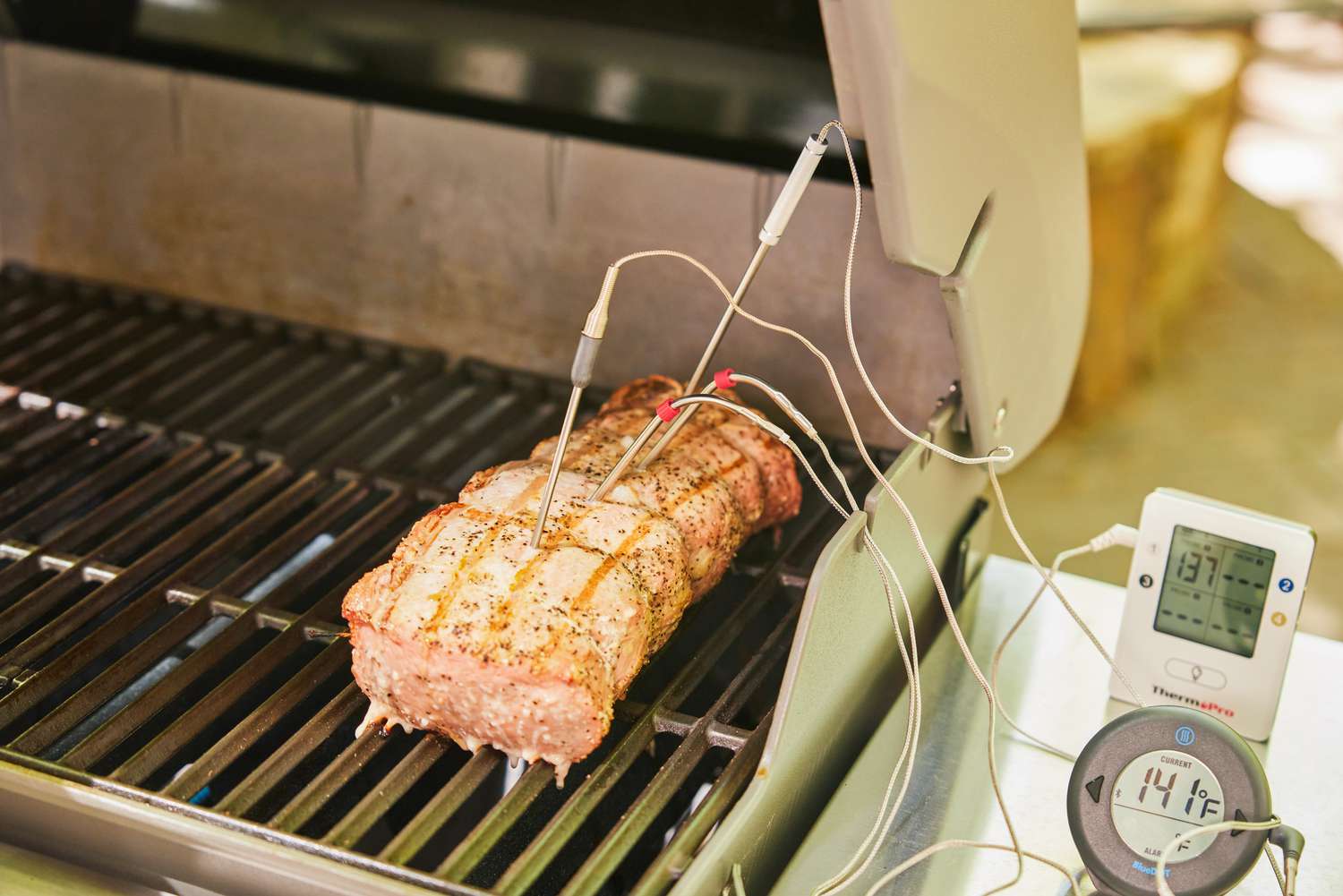Cooking meat to perfection requires precision, and one of the most reliable tools in any kitchen is a meat thermometer probe. Whether you’re grilling, roasting, or smoking meat, using a meat thermometer probe ensures that your food is safe to eat and cooked just right. This guide will explore everything you need to know about meat thermometer probes, including their types, benefits, usage, and maintenance.
Why You Need a Meat Thermometer Probe
Many home cooks and professionals rely on intuition or visual cues to determine if meat is done. However, these methods can be inaccurate, leading to undercooked or overcooked meat. A meat thermometer probe eliminates guesswork by providing an accurate internal temperature reading.
Key Benefits of Using a Meat Thermometer Probe
- Ensures Food Safety
- Cooking meat to the recommended temperature kills harmful bacteria like Salmonella and E. coli.
- Prevents foodborne illnesses caused by undercooked meat.
- Prevents Overcooking
- Helps achieve the perfect level of doneness without drying out the meat.
- Especially useful for delicate cuts like steak, pork chops, and poultry.
- Enhances Flavor and Texture
- Retains juices and tenderness in meat by avoiding overcooking.
- Ensures even cooking, making every bite delicious.
Types of Meat Thermometer Probes
Not all meat thermometers are the same. Depending on your cooking style, you may prefer one type over another.
1. Instant-Read Thermometer Probe
- Provides quick temperature readings within seconds.
- Ideal for checking meat doneness towards the end of cooking.
- Not designed to remain in the meat while it cooks.
2. Leave-In Probe Thermometer

- Designed to stay inside the meat throughout the cooking process.
- Perfect for roasting and smoking meats.
- Often connected to a digital display or an app for continuous monitoring.
3. Wireless Bluetooth Meat Thermometer Probe
- Uses Bluetooth or Wi-Fi to send real-time temperature updates to your smartphone.
- Allows remote monitoring without opening the oven or grill.
- Great for long cooking processes like smoking brisket.
4. Oven-Safe Dial Thermometer
- Features an analog dial that stays in the meat while it cooks.
- Slower response time compared to digital probes.
- Simple and reliable, but not as precise as digital thermometers.
How to Use a Meat Thermometer Probe Correctly
To get the most accurate reading, it’s crucial to use a meat thermometer probe properly. Here’s a step-by-step guide:
Step 1: Insert the Probe in the Right Spot
- Always place the probe in the thickest part of the meat.
- Avoid touching bones, fat, or gristle, as they can give false readings.
- For poultry, insert the probe into the inner thigh near the breast without touching bone.
Step 2: Check the Recommended Temperatures
Different types of meat require different internal temperatures for safe consumption. Below is a quick reference table:
| Meat Type | Minimum Safe Internal Temperature (°F) | Recommended Doneness Temperature (°F) |
|---|---|---|
| Chicken | 165°F | 165°F (fully cooked) |
| Turkey | 165°F | 165°F (fully cooked) |
| Beef (steak) | 120°F (rare) – 160°F (well-done) | 130°F (medium rare), 145°F (medium) |
| Pork | 145°F | 145°F (medium) – 160°F (well-done) |
| Fish | 145°F | 145°F (fully cooked) |
Step 3: Monitor the Temperature Closely
- If using an instant-read meat thermometer probe, check the temperature after removing the meat from heat.
- For leave-in probes, set an alert when the meat reaches the desired temperature.
- Let the meat rest for a few minutes before slicing to retain juices.
Tips for Getting Accurate Readings with a Meat Thermometer Probe
To ensure precise readings, follow these expert tips:
✔ Calibrate Your Thermometer Regularly
- Test accuracy by placing the probe in ice water (should read 32°F) or boiling water (should read 212°F).
✔ Use the Right Probe for the Job
- For grilling, choose a high-heat-resistant meat thermometer probe.
- For oven roasting, a leave-in probe with a digital monitor works best.
✔ Clean the Probe After Each Use
- Wash with warm, soapy water and dry thoroughly to prevent cross-contamination.
- Avoid submerging digital probes in water, as it may damage internal components.
✔ Allow Carryover Cooking
- Remove meat from heat a few degrees before the target temperature, as it will continue cooking while resting.
Best Meat Thermometer Probes in 2025
If you’re looking for the best meat thermometer probe, consider these top-rated options:

- ThermoPro TP20 – A wireless thermometer with dual probes for grilling and smoking.
- MEATER Plus – A fully wireless probe that syncs with a smartphone app.
- Lavatools Javelin PRO – A fast and accurate instant-read thermometer.
- Weber iGrill 2 – A Bluetooth-enabled probe for seamless cooking.
Each of these options provides high accuracy and ease of use, making them excellent choices for home and professional cooks.
Common Mistakes to Avoid When Using a Meat Thermometer Probe
🔴 Not inserting the probe deep enough – This can result in an inaccurate reading.
🔴 Checking the temperature too early – Wait until the meat is nearly done to avoid opening the oven/grill too often.
🔴 Ignoring resting time – Meat continues to cook after removal, so let it rest for at least 5-10 minutes.
🔴 Not cleaning the probe between uses – Can lead to cross-contamination and foodborne illnesses.
Conclusion: The Ultimate Tool for Perfectly Cooked Meat
A meat thermometer probe is an indispensable tool for any cook who values precision and food safety. Whether you’re grilling steaks, roasting a whole turkey, or smoking a brisket, a reliable thermometer ensures that your meat is cooked to perfection every time.
By choosing the right meat thermometer probe, using it correctly, and avoiding common mistakes, you’ll elevate your cooking skills and impress your guests with juicy, flavorful, and safely cooked meat.
So, if you don’t already have a meat thermometer probe, it’s time to invest in one—it will revolutionize the way you cook!
you may also read
Best eSIM for International Travel

